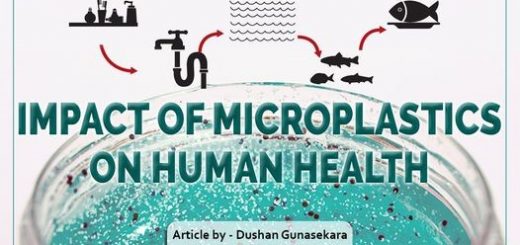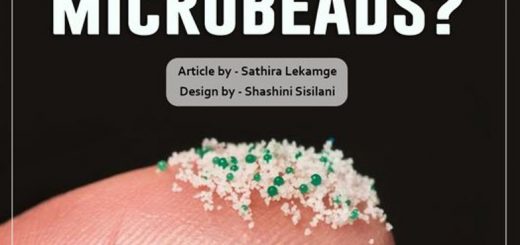Impact of Microplastics on Aquatic Flora
In the current society, we all are using different types of plastics everyday & everywhere. There are two types of plastic debris which are macro-plastics & microplastics. Microplastic can be classified into two groups which are primary microplastic & secondary microplastic. Microbeads are also a type of primary microplastics. By today, microplastics are the newly emerging threat because it has caused adverse effect on environment as well as animal & human bodies directly.
When it comes to the impact of microplastics on flora, the majority of microplastics are released into the terrestrial environment and accumulate in enormous quantities in soil. In addition to that, the degradation of plastics produces secondary particles. Small-sized microplastics can be found in wastewater also. Further, microplastics contain physical and chemical qualities that have the ability to change soil bulk density, microbial populations, water holding capacity, and other plant development aspects. As an example, particle size and form will have extremely varied effects on plant growth, as well as distinct food safety concerns. When considering plant growth, the various mechanisms via which microplastic particles could affect plant growth can be mentioned. Those are microbial immobilization & soil aggregation. On the other hand, those mechanisms will affect soil microbial community, root traits, and nutrient uptake. As a result, the considerable effects of different forms of microplastics on soil structure have the potential to influence plant community composition. Not only that, if microplastics alter soil structure, this could have an impact on microbial populations in the soil, influencing mineralization rates and root-colonizing symbiont groups. It can also affect the growth of plants.
In addition to that, plastic particles contain a high carbon content, and because the material does not decompose easily, the majority of this carbon will be relatively inert. As a result, this will cause microbial & nutrient immobilization. Because of that, it will be hard to the plants to absorb nutrients which will affect their growth. Phytotoxic substances that are already present in microplastics which are added during manufacturing, could be transported into soil with these microplastic particles. Toxic chemicals, either adsorbed onto the surfaces of microplastic particles in the soil or already present in the particles, could harm plant roots or their symbionts, resulting in reduced plant growth.
As mentioned above, microplastics will have adverse effects on flora due to lots of facts such as composition of microplastic & its ability to adsorb toxins. In addition to that, plant diversity also may be reduced, because of addition of microplastics to the environment. Not only that but also, it has a negative impact on other living beings such as animals & humans, as they consume plants for their nourishment.
References
https://www.ehn.org/plastic-in-farm-soil-and-food-264738468…
( accessed Oct 20, 2021).
https://sci-hub.se/downloads/2019-10-23/d1/rillig2019.pdf…
( accessed Oct 20, 2021).
https://phys.org/news/2020-07-crop-microplastics.html
( accessed Oct 20, 2021).



